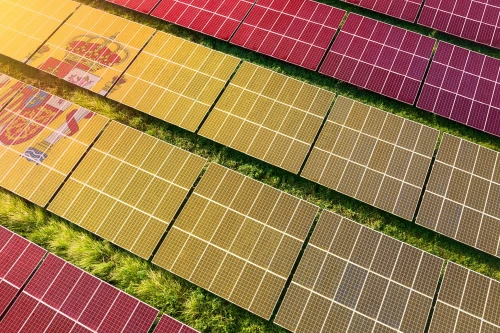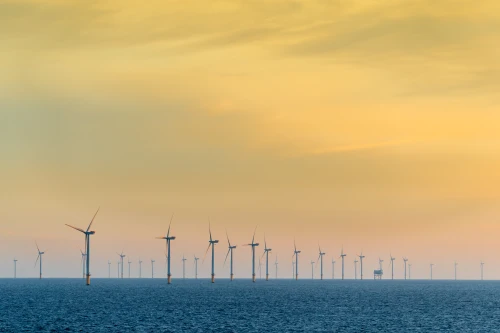
May 9th, 2025
Join our Swedish Energy Day on 20 May – Book now
Carbon markets offer businesses a real opportunity to reduce carbon emissions in line with the Paris Agreement guideline of limiting global warming to 1.5 degrees. Carbon market dynamics are of interest to any business looking to reduce its carbon emissions.

What are carbon markets and how do they make it easier for businesses to reduce carbon emissions? In a nutshell, carbon markets create an environment where businesses can trade units of offset carbon. This environment operates within a model that includes one business acting as the seller of offset carbon and one business acting as the buyer of offset carbon units.
If one business is proactively reducing carbon emissions through its everyday business, for example, reforestation and another business is producing considerable amounts of carbon, for example, heavy industry, then the second business can trade one unit of offset carbon for a cash value from the purchasing business. One tonne of carbon offset can be bought as a single unit by the purchaser, reducing their carbon emissions by an equivalent one tonne.
Drivers for carbon markets include:
Developing countries can benefit from carbon markets by using profits made from carbon offsetting to invest in local and community improvements. This, in turn, can make a business more attractive to potential clients and employees from a community employer value proposition perspective and a sustainability one.
As the world becomes more familiar with the process of carbon offsetting and the current – and more importantly, potentially lucrative future – opportunities, more businesses are entering carbon market trading. Money saved from penalties can be used to offset future carbon emissions in the instance that emissions targets increase. Saved funds can also be diverted towards improving the sustainable operations of a business, such as more sustainable manufacturing equipment, reducing a company's emissions further.
Carbon prices have risen over the last 12 months as demand for carbon offsetting increases and as more businesses enter the market, prices could continue to rise. Market volatility is explained in more detail further into this article under the section called Risks, Challenges and Carbon Trading Volatility: What to be aware of.
The carbon trading market can hold opportunities both for companies who want to sell and buy offset carbon:
Depending on your business' community or sustainability interests, you can invest in a range of different offsetting projects. For example, if your business sustainability goals align more closely with green credentials, you might want to invest in nature-based projects such as reforestation. If you have internal targets turned towards community engagement, you may prefer to invest in projects that impact the daily lives of people living in vulnerable communities, like clean water or cooking projects. For more on community engagement projects, visit the case study further into this article under the section titled Successful Energy Trading Case Study: Aviva.
Many companies are investing in carbon offset now, with the long-term view that the offset units they purchase now will be worth more in the future, which is explained in more detail further into this article under the section called Risks, Challenges and Carbon Trading Volatility: What to be aware of. As more businesses wanting to offset carbon enter the future market due to approaching sustainability targets – and their consequent financial penalties – initial investors can set the price of the units they've already offset and are holding. While there's no guarantee that the value of carbon offsetting will increase, if the current price rises continue, it may become a viable business investment.
Drones and AI represent two growth areas in carbon markets, helping to improve the accuracy and measurement of carbon offsetting. Drones can help to reduce man-hours spent surveying reforestation projects for offset projects - with beneficial financial implications. AI can also help support data gathering initiatives, processing large amounts of data collected via satellites to improve quality and verify data for offsetting projects.
Economic instability, such as recessions, can have a direct impact on the carbon market, and the economic challenges over the last 12 months have led to fluctuations in the carbon market. But what does this mean for buyers and sellers of offset carbon?
Evident economic instability, coupled with rising demand from companies looking to offset carbon and reduce carbon emissions, has led to the price inflation of offset carbon. This means that companies who actively reduce carbon emissions through their operations may see an increased value in the carbon units that they wish to sequester or write off.
Companies looking to invest in carbon offsetting will likely see some instability in the carbon market as more businesses enter the trading environment looking to purchase offset carbon. As more companies look to act on climate change, prices may rise in line with demand.
Aviva, the UK's biggest diversified insurance provider, services 19.2 million customers globally. It partnered with Climate Impact Partners, who links buyers of offset carbon to reputable projects looking to trade offset carbon. Aviva's investment in Climate Impact Partner's projects achieved:
1.3 million tonnes of carbon offset
Investment in a cookstove project located in a vulnerable community in India
Reduced indoor air pollution for the Indian families and businesses involved in the project, improving the health of children and women particularly
There are a number of climate partner organisations with which you can choose to trade offset carbon. Other types of projects that Climate Impact Partner offer include nature-based reforestation and afforestation projects, health and livelihood projects – including clean water initiatives – and sustainable infrastructure investment.
Follow carbon markets as they move

May 9th, 2025

May 8th, 2025

May 7th, 2025